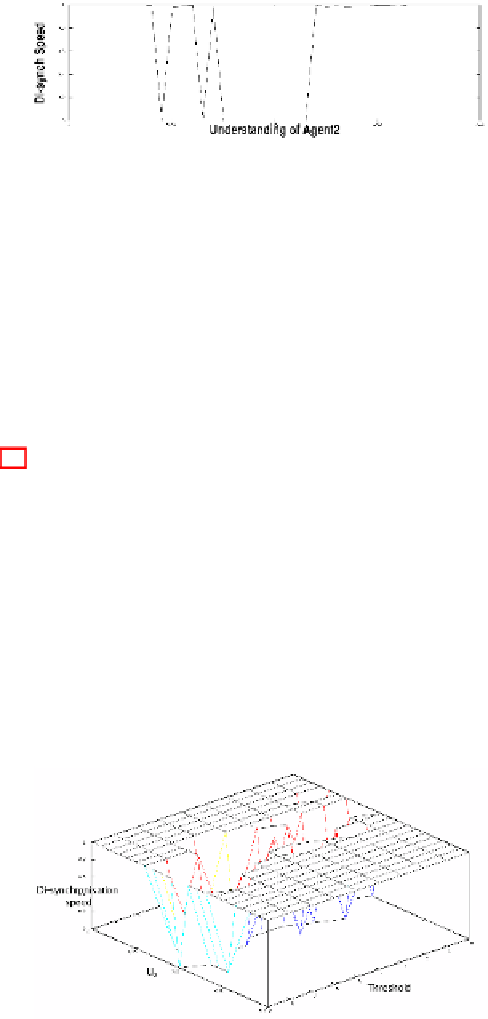Information Technology Reference
In-Depth Information
Fig. 9.
Di-synchronisation speed of the dyad, depending on the Agent2 understanding
u
2
.
u
2
varies from left to right between 0 and 0
.
02. A null disynchronisation speed means that synchro-
nisation has been maintained until the end of the experiment. A disynchronisation speed 1 is for
a dis-synchronisation occurring at the very beginning of the experiment.
Influence of Amount of Non-verbal Signals.
The coupling and synchronisation capabil-
ities of the dyad of agents, may directly depend on the amount of non-verbal signals
they exchange: among other, the ability to compensate a difference of understanding
may be improved by an increase of non-verbal signals exchanged. We tested this effect
by calculating disynchronisation speeds as just above, making
u
2
vary between
0
and
0
.
02
and the threshold
β
varying between
0
and
0
.
9
(
σ
=0
.
05
). We obtained the 3D
graph of Fig.10.
When
β
=0
.
9
, that is to say when very few non-verbal signals are exchanged,
synchrony maintains only when the two agents have equal level of understanding,
u
1
=
u
2
=0
.
01
. For other values, the influence of the threshold
β
is not so clear: the
dyad does not resist better to disynchronisation when
β<
0
.
5
than when
6
8
.
This effect, or this absence of effect, may be due to the fact that the more
β
decreases,
the less accurate in time the non-verbal signals are: if
β
is low, non-verbal signals are
emit earlier before the peaks of
S
i
activation and on a larger time window, they are not
enough precise in time to maintain synchrony. We chosen
β
=0
.
7
, i.e. the mean of its
best performances values.
≤
β
≤
Fig. 10.
Di-synchronisation speed of the dyad, depending on the Agent2 understanding
u
2
and
the threshold
β
(
σ
=0
.
5).
u
2
varies between 0 and 0
.
02.
β
varies from 0
.
9 to 0, in the sens
of non-verbal signals increase. When the d i-synchronisation speed value is null, synchronisa-
tion has been maintained until the end of the experiment. A disynchronisation speed 1 is for a
disynchronisation occurring at very beginning of the experiment.

